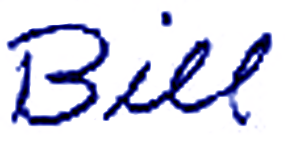Powerful Mind Part 9
Welcome to this week’s Bill Harvey Blog.
Updated May 30, 2025. Created May 5, 2023
Read Powerful Mind Part 8 | See all 12 Powerful Mind Keys

EOP=Emergency Oversimplification Procedure. Corresponds to a mild panic reaction which can be sustained for a lifetime.
Below are the ways to enter the Observer State at auspicious moments:
- Waking up, just before you open your eyes. Catch yourself if you start the EOP inner dialog. Observe the thoughts and feelings that arise without taking ownership of them. Treat them as coming from elsewhere, not as true expressions of your own positions on things. They are ideas you may or may not decide to accept after due consideration.
- Whenever you are alone during the day. On buses and trains and planes, while driving (with your primary attention on safety), and during bio-breaks.
- If at all possible, a daily meditation period. Twenty minutes at the end of the business day for example, or whenever works for you. The other moments described here are especially valuable if you cannot manage to squeeze in these twenty-minute daily vacations, which are however, of even higher value.
- When you close your eyes to go to sleep.
- Any time during the day when you feel challenged. Before responding, take as many moments as possible to breathe, feel the ground under you, and observe yourself and what is going on around you. Even if you feel negative emotions, phrase your responses as impartial, objective observations of relevant fact, without seeming to care about outcomes. “Pretending convincingly” is a way to accelerate actually becoming the person you are, since your ego in EOP does not believe in your authenticity and tends to dwarf your spirit.
- As many other times of the day as possible when you remember that the objective is to stay in the Observer state. Don’t beat yourself up for forgetting, just observe yourself and what is happening around you. Beating yourself up would just be more EOP activity.
Our work is motivated by the hypothesis that as more of us are able to stay longer in the most effective states of consciousness, all of the other problems of the world will tend to be solved as a result. If you think this is a stretch, look at what Gandhi was able to accomplish in India, a bloodless revolution that cast off British rule and temporarily softened the conflict between Hindus and Muslims; or what the Rev. Martin Luther King achieved in the South through the power of peaceful protest. These are just two examples of what can be attained with more powerful uses of mind.
Special Case of the Observer State
Buckminster Fuller, a celebrated Twentieth Century innovator and free thinker, wrote that his life really began on the day he decided to commit suicide.
He had been very much in love with a woman who did not feel the same way about him. After trying to forget her and trying many things to start his life anew, without success, he finally decided to end it all.
Then a strange thing happened. As soon as he knew that he was really going to go through with it, suddenly he found himself in a good mood. There was no rush to do the deed. Nothing worried him anymore because he had given up everything in his own mind — in the East they would say in his own heart.
Nothing worried him anymore.
This special case of Observer state, worth reporting here, happens when you hit rock bottom and simply cannot take it anymore, and you give up totally. You surrender.
In those rare moments, if one ever happens to you, take advantage of it.
Don’t miss the opportunity. Feel around inside yourself and see how changed you really are. Note the absence of crippling dependencies, attachments. You have lost that which you were most attached to keeping, and though you’re not happy about it, you are now free of that attachment.
You may have lost several things at once — your job, your new car, your house, your spouse or partner, or some other set of attachments. Whatever it was you lost, what you have gained is more valuable. Especially if you capitalize on it.
When you are down and out, start your life anew. Get your “new” more conscious life off to a good start, and enjoy every moment of it fully.
And if you’re feeling fine and want to feel, well, just finer, meditate and use the Powerful Mind techniques described throughout these blogposts whenever possible. Feeling finer is guaranteed.
There is a clearer and more effective state of consciousness that is only seconds away from your average daily state of consciousness.
Later posts will show you the simple keys to get there.
For now, it is enough just to know that the state exists and is real and can benefit you.
Details to follow in the subsequent posts.
Love to all,
![]()




